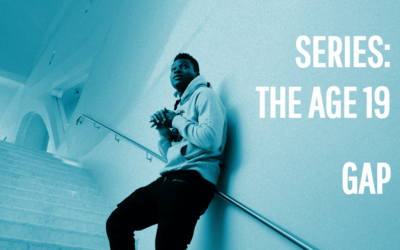The Covid-19 pandemic has had a disproportionate impact on Chicago’s Black and Brown communities. In response, Thrive Chicago has adjusted its strategy rapidly to adapt to the public health crisis and galvanize collective action during these difficult times. Thrive’s Covid relief efforts, in partnership with the Harlem Children’s Zone, have invested in mental health initiatives to support staff at youth-serving community organizations. But the impact on young people themselves has been profound.
Thrive’s data team examined a number of metrics to paint a portrait of how the pandemic has impacted youth between the ages 18 and 24 since March 2020. A report from JobsFirstNYC inspired the analysis of publicly available monthly data on the number of young people who are out of school and out of work, including a breakdown by race. Similarly, Thrive studied U.S. Census data from the Current Population Survey to gain weekly insights into youth mental health.
The number of Chicago youth who are out of school and out of work remains well above pre-pandemic levels
The rate of youth ages 18 to 24 who are out of school and out of work (OSOW) has been impacted by the Covid-19 pandemic. OSOW youth have gone from a low of less than 7% around February 2020 to a high of more than 30% in June 2020, before dropping to 2015-2019 trends again by October 2020. The numbers climbed again to 23% in June 2021 before dropping through summer and fall, prior to the Omicron surge. Still, numbers remain above where they were in February 2020, at 9% in November 2021.
The data through November 2021 tracks with surges in the virus, which leads to more restrictions, more hazards to health and may lead to more young people who are OSOW. Presumably, Omicron has reinforced this trend. Looking longer-term, back to 2015, OSOW rates typically follow a seasonal pattern, peaking in June-August; however, the pandemic has exacerbated these patterns.
The pandemic left a disproportionate number of Black and Hispanic youth out of school and out of work
At the onset of the pandemic, the number of youth ages 18 to 24 who were out of school and out of work was similar across races. Within months, the number of Black youth who were out of school and out of work increased to 50%. For Hispanic youth, the figure jumped to 36%. The number of Black and Hispanic OSOW youth has remained higher versus their white peers.
Anxiety among Chicago youth has remained persistently higher since the start of the pandemic
Thrive analyzed data from the U.S. Census Bureau’s Household Pulse Survey to understand the pandemic’s mental health impact on youth ages 18 to 24. The number of youth who felt anxious for more than half of days in the past week began to increase early in the pandemic and reached a peak at more than 60% of youth. It stood at 35% in January 2021 when it shot over 60%. Anxiety appears to increase during virus surges and decrease as there are fewer cases. Still, anxiety remains above pre-pandemic levels and underscores the desperate need for youth mental health supports.
Thrive’s focus on building and supporting partners’ capacity to process and apply data can guide initiatives such as those that address the secondary trauma that so many staff at youth-serving organizations face.
For more information about these analyses, contact David Krosin, Thrive Data Manager, at dkrosin@thrivechi.org.




